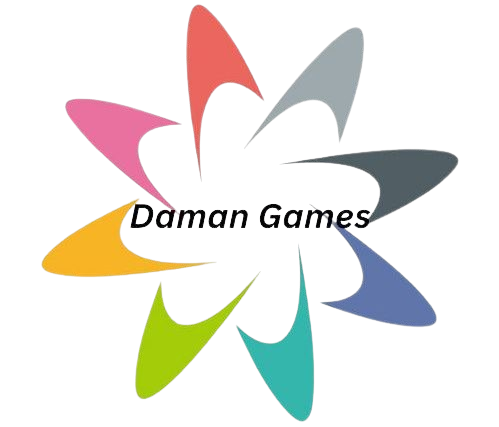The Science of Self-Healing: Inside the PRP Technology Surge

In recent years, the idea that the human body can heal itself has gone from philosophical to scientific. Medicine is entering a new frontier where biological intelligence is leveraged instead of overridden. One of the most groundbreaking innovations in this field is Platelet-Rich Plasma, or PRP, a technology that has surged in popularity for its ability to stimulate natural healing. In the center of this movement lies the concept of prp treatment, which taps into the body’s own cellular mechanisms to rejuvenate tissue and accelerate recovery.
Understanding the Biology Behind PRP
At its core, PRP uses one of the body’s own elements—blood. When processed in a centrifuge, blood separates into its components: red blood cells, white blood cells, plasma, and platelets. The latter, platelets, are key players in healing. They contain growth factors, proteins, and cytokines that trigger regeneration processes. PRP is created by concentrating these platelets in plasma and then reinjecting the substance into damaged or aging tissue.
What makes PRP stand out isn’t its complexity—it’s its elegance. Unlike pharmaceutical interventions or surgical procedures, PRP doesn’t introduce foreign substances or structures into the body. It amplifies what’s already there. This self-reliant characteristic is why it's often labeled a “bioidentical” therapy and is gaining traction among patients seeking natural alternatives.
From Athletes to Aesthetics: Where PRP is Making an Impact
Initially popularized by elite athletes looking to reduce downtime and extend their careers, PRP has since made its way into mainstream orthopedic practices. Torn ligaments, tendonitis, and joint pain have all been shown to respond positively to PRP injections. But the application of this technology has broadened well beyond the sports world.
Dermatology and aesthetic medicine are now two of the most rapidly growing areas using PRP. In hair restoration, the concentrated platelets stimulate dormant follicles, encouraging regrowth. In skin care, PRP is often used in combination with microneedling or laser therapy to rejuvenate skin, reduce fine lines, and improve texture. These results are achieved without fillers or harsh chemicals, which is why it appeals to a growing demographic of wellness-conscious consumers.
The dental world, too, has started exploring PRP for accelerating post-extraction healing or bone graft integration. This cross-disciplinary success is driving a broader acceptance of PRP in both medical and elective procedures.
The Surge Is Backed by Data—But Not Without Debate
Although PRP is supported by a growing number of case studies and real-world outcomes, it is not without its skeptics. The main critique lies in the variability of treatment protocols. Since PRP isn’t a drug but a process, how the blood is spun, how the PRP is prepared, and where it is injected can vary significantly from one clinic to another. This inconsistency makes it difficult to conduct large-scale, double-blind studies with uniform results.
That said, a wave of promising peer-reviewed studies is beginning to paint a more consistent picture of PRP’s effectiveness. Meta-analyses show improved outcomes in orthopedic cases such as osteoarthritis of the knee and lateral epicondylitis. In aesthetic fields, blinded trials have documented measurable improvements in skin firmness and hair density.
More important than uniformity is the trend of improvement. With each passing year, clinicians are refining the protocols and standardizing dosage and application techniques. Regulatory bodies in Europe and the U.S. are also showing signs of moving toward clearer guidelines, which will further validate and streamline PRP usage.
Why Patients Are Embracing the Self-Healing Philosophy
Perhaps one of the most compelling aspects of the PRP revolution is the patient perspective. In a world where invasive surgeries often come with long recovery times and side effects, and where pharmaceutical solutions may carry dependency risks, PRP presents a hopeful middle ground. It's minimally invasive, uses no synthetic drugs, and typically has minimal downtime.
This aligns with the broader wellness movement that values holistic healing, preventive care, and bodily autonomy. Many patients report not only physical improvement but a psychological uplift from knowing that their own bodies are responsible for the recovery. There's empowerment in that idea, especially in an era of impersonal medical care.
Add to this the relative safety of PRP—since it uses the patient’s own blood, allergic reactions and infections are far less common—and it becomes clear why the demand for this technology continues to rise year after year.
The Future of PRP: Next-Level Regenerative Medicine
The evolution of PRP is just beginning. Researchers are now combining it with other regenerative techniques, including stem cell therapy and exosome treatments, to further enhance results. This new class of therapies, sometimes called “next-gen biologics,” aims to go beyond healing by actually reversing certain age-related conditions at the cellular level.
Wearable devices and smart diagnostics are also contributing to this future. Imagine a scenario where a patient’s healing progress is monitored in real-time, and PRP treatments are fine-tuned based on biometric feedback. Such integrations are already being tested in advanced clinical settings.
Moreover, advancements in blood processing technology are creating “super-concentrated” PRP formulations with higher platelet densities and enhanced regenerative factors. These innovations may allow for targeted therapies for more complex conditions like spinal degeneration, autoimmune inflammation, and even organ regeneration.
A Paradigm Shift in Medicine
The rise of PRP isn’t just about a new tool in the doctor’s arsenal. It reflects a broader shift in how we view healing. Rather than seeing the body as a machine to be fixed from the outside, this new paradigm views the body as an ecosystem capable of restoration—if given the right signals.
PRP technology offers one of those signals. As it becomes more refined, accessible, and regulated, we are likely to see its use become commonplace—not just in clinics but possibly even in personalized home-use formats. Like all medical advancements, the key will be to balance innovation with responsibility, ensuring patient safety and outcome consistency while continuing to explore the incredible potential of self-healing science.
Note: IndiBlogHub features both user-submitted and editorial content. We do not verify third-party contributions. Read our Disclaimer and Privacy Policyfor details.











